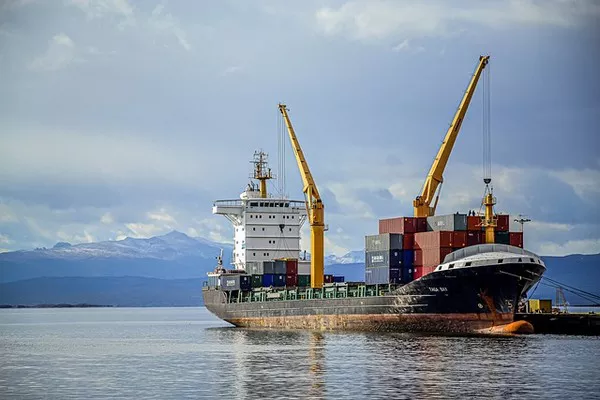The Panama Canal, a vital passageway for global shipping, is grappling with significant shipping delays due to a shortage of freshwater caused by drought conditions. This situation sheds light on the often overlooked but critical role that freshwater plays in global supply chains. The ongoing El Niño-induced drought has left the region parched, resulting in lower water levels in the canal’s locks. As a consequence, the number of ships able to pass through each day has dwindled to 31, compared to the usual 36 to 38. Consequently, product movement through the canal has slowed, leading to longer waiting times and potential implications for the availability of goods on store shelves.
The predicament at the Panama Canal underscores the fundamental connection between access to freshwater and the manufacturing and shipping of goods. Contrary to common belief, the Panama Canal relies on freshwater to operate its locks, which raise cargo freighters to the level of man-made lakes spanning Panama’s isthmus before lowering them to sea level on the other side.
Each ship crossing necessitates a staggering 52 million gallons of freshwater sourced from lakes, rivers, and streams across the country. This presents a trade-off between preserving water for local needs and utilizing it to enable ships’ passage through the canal. With reduced water allocations, fewer vessels can navigate the canal.
The Panama Canal is not an isolated case; similar water level challenges have affected other important waterways. Periodic low water levels in the Mississippi River and Germany’s Rhine River have disrupted barge traffic, causing supply chain disruptions and fueling debates on the distribution of limited freshwater resources. Recent plans by communities in northern Colorado to construct reservoirs on Colorado River tributaries have also highlighted disputes over local water access and governance.
Water resource management is a perennial challenge, with historical evidence of complex systems dating back to ancient civilizations. While progress has been made over the centuries, recent years have witnessed a shift in attention towards other environmental concerns, often relegating water management to the background.
Managing water resources becomes particularly intricate when businesses and communities find themselves in conflict. While businesses require water for their operations, communities strive to safeguard water supplies for essential needs. Striking a balance between these competing interests necessitates a closer examination of water usage in everyday product manufacturing.
Research indicates that water is a significant component in the production of almost all consumer goods. For instance, a single pair of jeans requires approximately 2,600 gallons of water throughout its lifecycle, from cotton cultivation to denim manufacturing and retail distribution. Water is embedded in products as they traverse the supply chain, as businesses utilize water to transport water.
Addressing water-related challenges is not only beneficial for society but also essential for businesses themselves. Water scarcity can impede production and disrupt supply chains, thereby impacting business operations. Consequently, businesses have a vested interest in improving water management to reduce consumption, costs, and exposure to water-related risks.
To achieve this, companies can adopt several strategies. Firstly, recognizing that not all processes require clean water, businesses can use wastewater from one process for another that doesn’t necessitate clean water. Additionally, wastewater resulting from processes that do not pollute water can be reused. Secondly, companies can implement industrial ecology principles by sharing wastewater between facilities. For instance, nutrient-rich water from food production can be repurposed for irrigation instead of being discharged. Lastly, businesses can explore innovative approaches such as utilizing water as a medium for heat transfer, connecting systems to optimize energy usage.
Amidst growing concerns over water scarcity, opportunities abound for improving the management of this invaluable resource. While government regulations and reporting requirements play a crucial role, businesses themselves can drive significant change through proactive decision-making.

